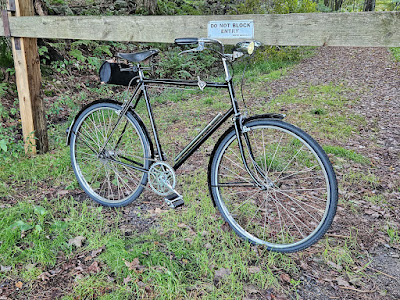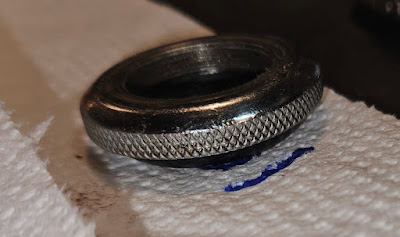It is hard to believe that the end of 2023 is almost upon us. It seems like the year just began, and now here we are at the end. It is this time of year that I like to take stock of what happened over the past 12 months. I usually do a recap at the end of ride season, and I like to close out the year in the same fashion.
Season
- The start of ride season was somewhat delayed by late snow. We had a big snow storm in March after an unusually mild and quiet winter. This pushed back the start of the season a couple of weeks from normal.
- Summer was damp, cool, and rainy. There were also "smoke days" that prevented some rides. This was one of the worst summers in terms of ride conditions in recent memory.
- Fall was better than usual with mild weather and (finally) a dry spell running from late September into early November. The season finished a couple of days later than usual. I was able to ride right up until the daylight and clock changes made it too difficult to ride after work.
- Winter has been mild so far. I've been working in my indoor work room, though at a pretty slow pace. Projects slow way down in winter.
This Year's Changes: Bikes In... Bikes Out...
What about bikes? Here is a recap of this year's new projects and bikes moved on to new owners:
- 1953 Raleigh Lenton: bought from a collector in Maryland/DC (I lived in the DC area for 17 years, so it was nice to have a bike from where I used to live). I kept this bike and made a few changes to it. It has chrome fenders now, but I have a beautiful set of white Raleigh fenders for it to go on in the new year.
- 1940 Raleigh Model 35: a purchase from a collector in Massachusetts. I cleaned up and serviced this bike, which is in outstanding shape. This one is a fairly early Raleigh in the US (they arrived about 1933, so within 7 or so years of the arrival) and a keeper.
- 1949 Raleigh Clubman: another purchase from a collector in Massachusetts. This beautiful bike is a 22 inch frame on vintage Dunlop alloy wheels. It's a lightweight, lively bike. It is built up with a set of Nitto swept back handlebars.
- 1941 Schwinn New World: saved this bike, which had been parted out on eBay. I got the bike core and built up a beautiful, period rider bike. It was a standard 21-22 inch frame, so I sold it to another collector.
- 1942 Schwinn New World: this was a mild custom bike based on period 1940s art deco and streamline design. It had a WWII aviation theme overall. I sold this bike as well because it was a standard 21-22 inch frame.
- 1968 Raleigh Sports: this was a very generous gift from a neighbor who was the original owner of the bike. It was in beautiful condition and very much original. I donated this bike to a local bike charity for high school students. One of the students really, really liked the bike and I believe he ended up being the final recipient. It's good to get younger people involved in this hobby.
- 1959 Schwinn Traveler: this was a simple frame and fork, but it was a tall 23-24 inch frame, which is a huge plus. It's hard to find tall frame Schwinn 3 speeds from before the late 1960s. I built this bike up as a period 1950s three speed. It's a great rider and a keeper.
- 1957 Schwinn Traveler: this was a Craigslist find locally. A local collector gave me a helpful lead and because it was a tall frame, I bought it. It's a very unusual era Schwinn 3-speed. I finished this project late in the season and only had a couple test rides. It still needs some final shakedown rides next season.
- 1951 New Hudson Silver Arrow: this was an online purchase from another collector. The shipping company destroyed the original celluloid fenders. It came with all the original paperwork (which was from England). This project is finished except for shakedown rides and some cosmetic repair to the paint.
- 1963 Raleigh roadster: this was a "export" roadster I owned for several years. I sold it to a collector down south. It's a wonderful bike but a lot of work to schlep up all the hills we have around here.
- 1991 Woudt Zwaluw: this is the "wildcard" of the bunch. It was a $50 Facebook Market find. It's a legit Dutch roadster with drum brakes, chain case, rack, lights, and all the stuff the Dutch love to add to their bikes. I'm looking forward to rebuilding this one in the new year because it's so different from what I usually build. I'm thinking it might make a fun commuter for those nice days when I can ride to the office.
- 1941 Schwinn New World: this was quite a find. It's a pre-war tall frame Schwinn three speed (they seem so rare). It needs a lot of work, and we'll see what the new year brings. Sometimes the ability to see the potential in a bike is a curse because then you end up with yet another project to do...
The other usual suspects in my fleet remain with me. They don't change much and are great bikes.
Closing Thoughts
I'm enjoying the "sporting roadster" type of bike. The Lenton, Clubman, and Silver Arrow are in this league. They combine the convenience of a "Sports light roadster" type bike with the reduced weight of a sporting or club bike. They're great on all the hills we have around here.
I'm trying to focus on a specific bike size. I find a 23 inch frame on 26 inch wheels is a good fit. Bikes around that size are all pretty good for me. Not all of my bikes will be exactly this size, but I've gotten pickier about sizes fitting over the years.
I'm still accumulating "bread and butter" parts. These are the parts you always seem to need to complete a project: good brake calipers, brake handles, pedals, leather saddles, bearing sets, wheelsets, hub small parts, etc. I take in so many "saver" bikes - projects that were blown apart and deserve to be put back on the road. These bikes inevitably are missing parts, and I like to keep a stock of high-demand parts so I don't have to cast about for stuff.
I'm still a "hopeless romantic" when it comes to old three speed bikes. Why would I need yet another Schwinn or Raleigh three speed? Because I like the endless variety they offer and I enjoy riding them. I'm sure if I had a modern hybrid bike, it would be more practical. Yet here I am with a shed full of vintage steel bikes. You only live once, as they say...


















































